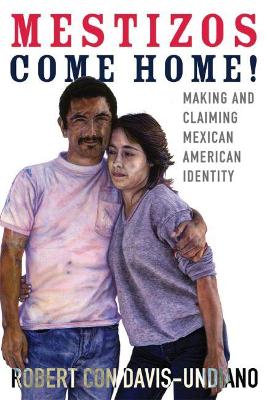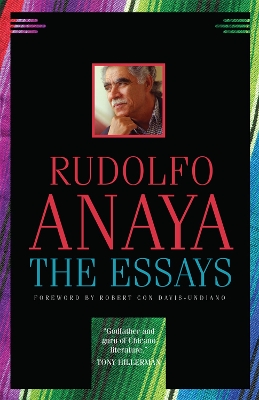Chicana and Chicano Visions of the Americas
2 total works
Mestizos Come Home! explores key areas of change that Mexican Americans have brought to the United States. These areas include the recognition of mestizo identity, especially its historical development across the nineteenth and twentieth centuries; the re-emergence of indigenous relationships to land; and the promotion of Mesoamerican conceptions of the human body. Clarifying and bridging critical gaps in cultural history, Davis-Undiano considers important artifacts from the past and present, connecting the casta (caste) paintings of eighteenth-century Mexico to modern-day artists including John Valadez, Alma Lopez, and Luis A. Jimenez Jr. He also examines such community celebrations as Day of the Dead, Cinco de Mayo, and lowrider car culture as examples of mestizo influence on mainstream American culture. Woven throughout is the search for meaning and understanding of mestizo identity.
A large-scale landmark account of Mexican American culture, Mestizos Come Home! shows that mestizos are essential to U.S. national culture. As an argument for social justice and a renewal of America's democratic ideals, this book marks a historic cultural homecoming.
Collected here are Anaya’s published essays. Despite his wide acclaim as the founder of Chicano literature, no previous volume has attempted to gather Anaya’s nonfiction into one edition. A companion to The Man Who Could Fly and Other Stories, the collection of Anaya’s short stories, The Essays is an essential anthology for followers of Anaya and those interested in Chicano literature.
Pieces such as “Requiem for a Lowrider,” “La Llorona, El KookoÓee, and Sexuality,” and “An American Chicano in King Arthur’s Court” take the reader from the llano of eastern New Mexico, where Anaya grew up, to the barrios of Albuquerque, and from the devastating diving accident that nearly ended his life at sixteen to the career he has made as an author and teacher. The point is not autobiography, although a life story is told, nor is it advocacy, although Anaya argues persuasively for cultural change. Instead, the author provides shrewd commentary on modern America in all its complexity. All the while, he employs the elegant, poetic voice and the interweaving of myth and folklore that inspire his fiction. “Stories reveal our human nature and thus become powerful tools for insight and revelation,” writes Anaya. This collection of prose offers abundant new insight and revelation.

